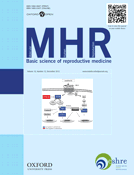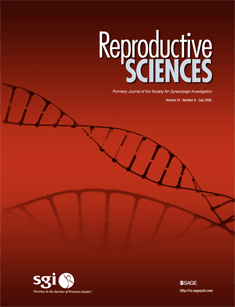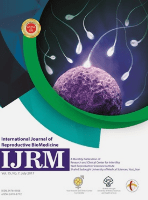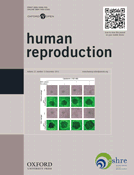
MOLECULAR HUMAN REPRODUCTION
Scope & Guideline
Pioneering Research for a Healthier Future in Reproductive Medicine
Introduction
Aims and Scopes
- Molecular Mechanisms of Reproduction:
Research exploring the molecular and cellular underpinnings of human reproduction, including gametogenesis, fertilization, and early embryonic development. - Infertility and Its Etiology:
Studies investigating the causes of infertility in both males and females, addressing genetic, epigenetic, and environmental factors. - Reproductive Technologies:
Innovative approaches and methodologies in assisted reproductive technologies (ART) including IVF, ICSI, and embryo culture optimization. - Endometrial Biology and Implantation:
Research focusing on the endometrium's role in implantation, including hormonal influences, immune responses, and cellular interactions. - Animal Models of Reproductive Health:
Utilization of animal models to study reproductive processes, disease mechanisms, and potential therapeutic interventions. - Epigenetics in Reproductive Biology:
Investigation of epigenetic modifications and their implications for fertility, embryonic development, and reproductive disorders.
Trending and Emerging
- Single-Cell Analysis Techniques:
The use of single-cell technologies to study oocyte and embryo development is gaining traction, allowing for more detailed insights into cellular heterogeneity and developmental competence. - MicroRNA and Extracellular Vesicles:
Research on the roles of microRNAs and extracellular vesicles in reproductive processes is emerging, particularly their regulatory functions in oocyte and embryo development. - Impact of Maternal Health on Reproductive Outcomes:
Increasing focus on how maternal health conditions, such as obesity and metabolic disorders, affect reproductive outcomes and embryonic development. - Genetic and Epigenetic Factors in Infertility:
Studies investigating the genetic and epigenetic underpinnings of infertility, including the role of specific genetic variants and epigenetic modifications. - Innovations in ART and Embryo Culture:
Emerging methodologies in ART, including improved culture conditions and embryo selection techniques, show a trend towards enhancing success rates in assisted reproduction. - Cross-Species Comparisons in Reproductive Research:
An increasing interest in comparative studies across species to understand reproductive mechanisms and their evolutionary implications.
Declining or Waning
- Traditional Fertility Treatments:
Research related to conventional fertility treatments such as Clomid and standard IVF protocols seems to be declining, as newer methodologies and technologies gain prominence. - Basic Physiology of Reproductive Organs:
Studies focusing solely on the basic physiological functions of reproductive organs without molecular or genetic context appear to be less common. - Generalized Population Studies:
Broad epidemiological studies on reproduction without a specific molecular or mechanistic focus are becoming less prevalent in favor of more targeted, mechanistic investigations. - Hormonal Treatments Without Molecular Insights:
Research on hormonal treatments that lacks molecular analysis or understanding of underlying mechanisms is less frequently featured, reflecting a shift towards more integrated approaches. - Invasive Procedures in Fertility Treatments:
Interest in invasive procedures for fertility treatments, such as surgical interventions, seems to be diminishing in favor of non-invasive or less invasive techniques supported by molecular findings.
Similar Journals

Animal Reproduction
Transforming veterinary science through groundbreaking research.Animal Reproduction is a premier open-access journal published by the Brazilian Coll Animal Reproduction, focusing on the dynamic field of reproductive biology within both veterinary science and animal husbandry. Established in 2004, the journal has rapidly gained prominence, securing a Q2 ranking in both Animal Science and Zoology as well as veterinary disciplines as of 2023. With a growing impact factor and an engaged readership, Animal Reproduction serves as a vital platform for researchers, professionals, and students seeking to disseminate and gain insights into the latest studies and innovations in animal reproductive health and technology. Based in Brazil, the journal's content spans a wide array of topics essential for advancing the scientific understanding of reproduction in animals, thus contributing to improved practices in veterinary medicine and livestock management. The journal is indexed in major databases such as Scopus, ensuring that the research published is accessible to a global audience. Whether you're a seasoned researcher or a student looking to deepen your knowledge, Animal Reproduction is indispensable for anyone engaged in this critical area of study.

MOLECULAR REPRODUCTION AND DEVELOPMENT
Exploring the intricacies of life at the molecular level.MOLECULAR REPRODUCTION AND DEVELOPMENT is a prestigious peer-reviewed journal published by WILEY, specializing in the intricate domains of Cell Biology, Developmental Biology, and Genetics. Since its inception in 1988, this journal has been a vital platform for disseminating pioneering research and innovative methodologies that advance our understanding of molecular mechanisms driving reproduction and development. With a current impact factor reflective of its significance in the field, MOLECULAR REPRODUCTION AND DEVELOPMENT is ranked Q3 in both Cell Biology and Developmental Biology, and Q2 in Genetics, underscoring its relevance and scholarly contribution. Catering to a diverse audience of researchers, professionals, and students, this journal not only showcases cutting-edge findings but also aims to foster interdisciplinary exchanges that enhance scientific collaboration. By exploring critical biological processes, it ultimately contributes to the broader understanding of health and disease in various organisms, making it an essential resource for anyone dedicated to the life sciences.

ANIMAL REPRODUCTION SCIENCE
Elevating Understanding of Reproductive PhysiologyANIMAL REPRODUCTION SCIENCE, published by Elsevier, is a leading journal dedicated to the field of animal reproduction and developmental biology. With an ISSN of 0378-4320 and an E-ISSN of 1873-2232, it serves as a vital resource for researchers, professionals, and students interested in advancing their understanding of reproductive mechanisms across various species. The journal has been recognized for its high-quality contributions, achieving a Q1 ranking in Animal Science and Zoology and showcasing its significant impact in the areas of Endocrinology and Veterinary Medicine as per the 2023 category quartiles. Covering a wide range of topics from reproductive physiology to genetic implications, this journal not only highlights innovative research but also fosters interdisciplinary dialogue in the rapidly evolving world of animal science. Though not currently offering open access, it remains a crucial platform for disseminating pivotal research findings from across the globe. With its rich history dating back to 1936, ANIMAL REPRODUCTION SCIENCE continues to drive excellence in animal reproduction studies, positioning itself at the forefront of the field, and solidifying its relevance in both science and industry.

Reproductive Sciences
Advancing Knowledge in Reproductive HealthReproductive Sciences is a premier journal published by SPRINGER HEIDELBERG, dedicated to the field of obstetrics and gynecology. With its ISSN 1933-7191 and E-ISSN 1933-7205, the journal has established itself as a leading source of high-quality research and clinical insights since its inception in 2007, and continues to converge its scope into 2024. Currently ranked in the Q1 category for obstetrics and gynecology, it holds the 43rd position among 209 journals in the Scopus rankings, underscoring its influence and relevance within the medical community. This journal is particularly dedicated to advancing knowledge in reproductive health, providing a platform for innovative research and clinical practices through both traditional and open access options. Located in Switzerland with an address in Heidelberg, Germany, Reproductive Sciences is not just a publication; it is a vital resource for researchers, professionals, and students seeking to make impactful contributions to the field of reproductive health.

Reproductive Medicine
Advancing Knowledge in Reproductive HealthReproductive Medicine is an esteemed open-access journal published by MDPI, focusing on the latest research and advances in reproductive health, fertility, and assisted reproductive technologies. With its E-ISSN of 2673-3897, the journal aims to provide a platform for researchers, clinicians, and healthcare professionals to disseminate their findings, share innovative practices, and engage in scholarly discourse. Situated in Basel, Switzerland, Reproductive Medicine emphasizes a multidisciplinary approach, exploring biological, clinical, and psychological aspects of reproductive health. Although the journal is in the early stages of establishing metrics such as H-index and Scopus rankings, its open-access model enhances accessibility, allowing for a broad dissemination of knowledge. Committed to fostering advancements in the field, Reproductive Medicine is essential for those seeking to stay at the forefront of reproductive health research.

Reproduction and Fertility
Pioneering discoveries in reproduction and fertility.Reproduction and Fertility is a premier academic journal published by BIOSCIENTIFICA LTD, dedicated to advancing knowledge in the fields of reproductive sciences, obstetrics, gynecology, and related areas. Established with a focus on delivering high-quality research, this journal has quickly ascended in prominence, achieving a commendable Q2 ranking in multiple categories, including Embryology, Obstetrics and Gynecology, Reproductive Medicine, and Urology, as of 2023. With an E-ISSN of 2633-8386, Reproduction and Fertility aims to provide a valuable platform for researchers, professionals, and students alike, offering insights into the latest discoveries and innovations in reproductive health. Although currently not an open-access journal, it remains committed to disseminating important findings that can influence clinical practices and policy-making worldwide. Operating from its headquarters in Bristol, United Kingdom, the journal serves as an essential resource for anyone invested in understanding and improving reproductive health outcomes through rigorous academic research.

Plant Reproduction
Enhancing Understanding of Plant Life CyclesPlant Reproduction is an esteemed academic journal published by Springer, dedicated to advancing the understanding of reproductive processes in plants. With its ISSN 2194-7953 and E-ISSN 2194-7961, this journal serves as a vital resource for researchers and professionals in the fields of cell biology and plant science. Since its inception in 2013, it has been recognized in the Q1 Quartile for plant science, underscoring its significance and impact within the academic community, while maintaining a ranking of #79/516 in the Scopus database for agricultural and biological sciences. The journal embraces an Open Access model, enhancing accessibility for a broader audience of scholars and practitioners. As we continue to converge our research efforts towards 2024 and beyond, Plant Reproduction remains committed to exploring innovative findings and fostering collaboration in plant reproductive biology, thereby contributing significantly to the global understanding of plant systems and their ecological impacts.

HUMAN REPRODUCTION UPDATE
Leading the Way in Human Reproduction ResearchHUMAN REPRODUCTION UPDATE, published by Oxford University Press, stands as a leading journal in the fields of Obstetrics and Gynecology and Reproductive Medicine. With an impressive Q1 ranking in both categories according to the 2023 category quartiles and a significant Scopus rank, it is recognized as one of the top journals globally in these disciplines, catering to the most relevant and cutting-edge research. The journal has been a crucial platform for disseminating vital findings and reviews from 1995 to 2024, contributing to advancements in human reproductive health. With its focus on publishing high-quality, peer-reviewed articles, it serves as an essential resource for researchers, healthcare professionals, and students seeking the latest insights and developments in reproductive science. As the journal aims to foster informed discussions and encourage further research, it remains committed to shaping the future of reproductive health and medicine.

International Journal of Reproductive Biomedicine
Advancing reproductive health through innovative research.The International Journal of Reproductive Biomedicine, an esteemed publication by SHAHID SADOUGHI UNIVERSITY OF MEDICAL SCIENCES, serves as a pivotal platform in the fields of obstetrics and gynecology as well as reproductive medicine. Established in 2011 and transitioning to an open access model in 2015, this journal facilitates the dissemination of innovative research and critical findings to a global audience, particularly focusing on advancements in reproductive health and biomedicine. With an impact factor reflective of its commitment to high-quality scientific inquiry, the journal has achieved a notable ranking of Q3 in both its categories for 2023, contributing to its growing influence within the academic community. Researchers and professionals benefit from its broad scope, which encompasses a range of topics essential to reproductive health, thus fostering a rich exchange of knowledge. The journal's accessibility allows students and professionals alike to engage with the latest findings and contribute to ongoing discussions within this vital field of study.

HUMAN REPRODUCTION
Elevating research in obstetrics and gynecology.HUMAN REPRODUCTION is a prestigious academic journal published by Oxford University Press, dedicated to advancing the field of reproductive medicine. With an impressive impact factor highlighting its significance, the journal ranks in the top quartile (Q1) for Obstetrics and Gynecology, Rehabilitation, and Reproductive Medicine, showcasing its crucial role in disseminating high-quality research. Founded in 1986, it has become a key resource for researchers, practitioners, and students interested in cutting-edge developments and innovative practices in human reproduction. Despite not currently offering open access, the journal continues to publish a wealth of peer-reviewed articles that contribute substantially to clinical knowledge and practice. With Scopus rankings placing it among the top journals in its categories, HUMAN REPRODUCTION remains an essential platform for discussion and dissemination of vital findings impacting reproductive health globally.